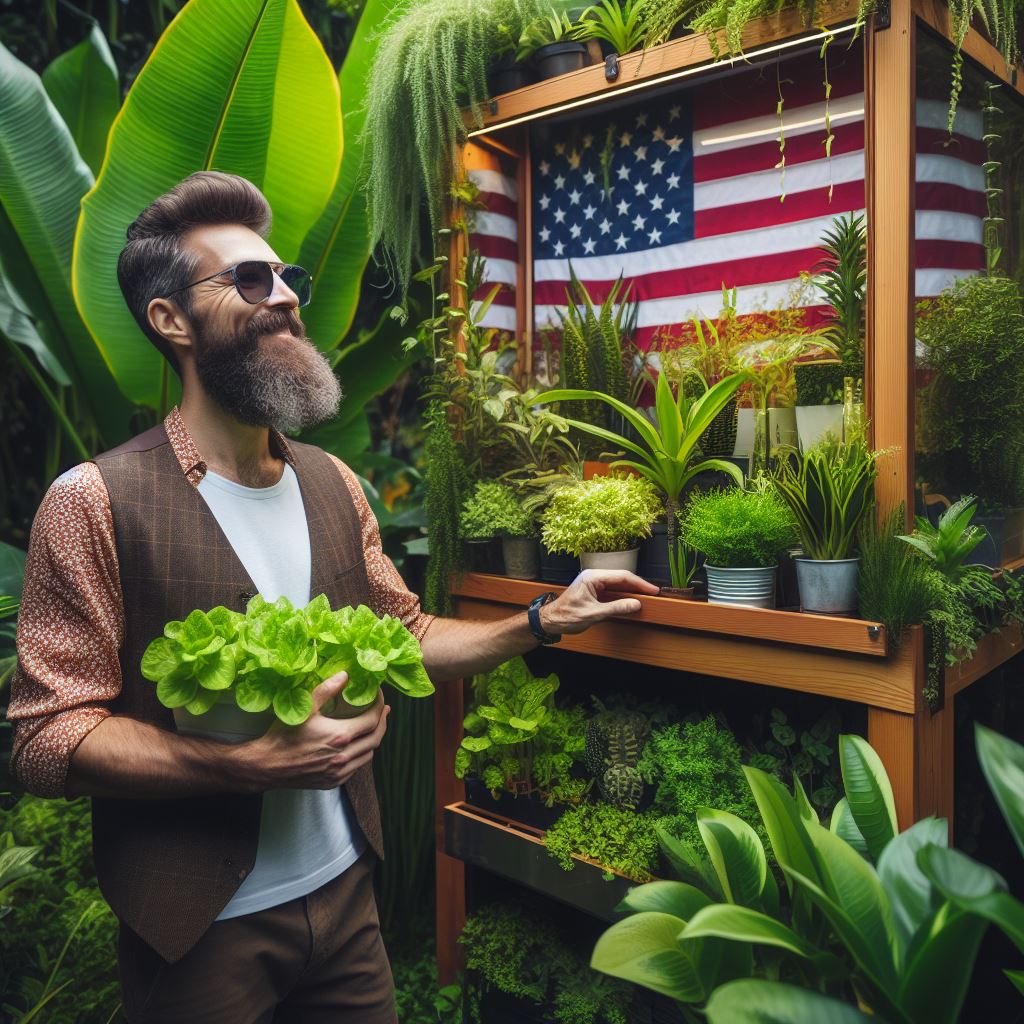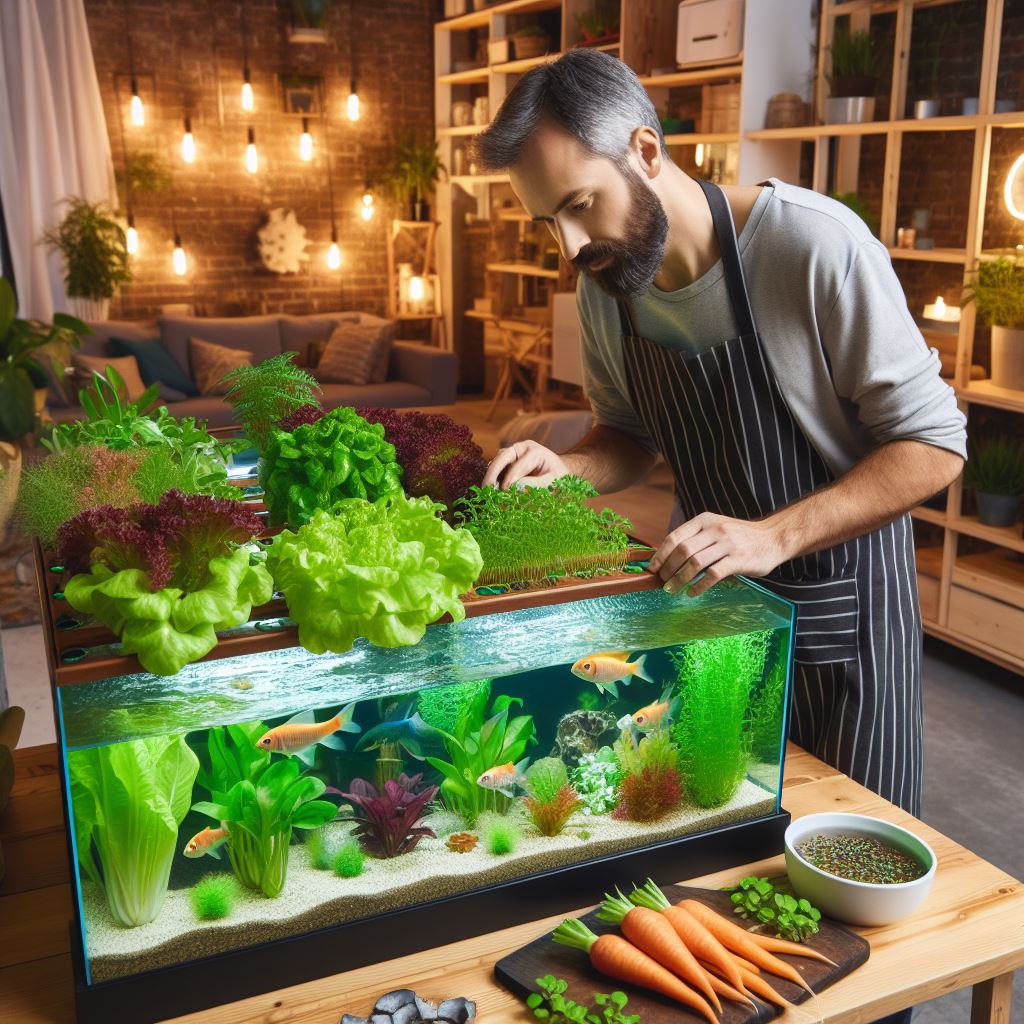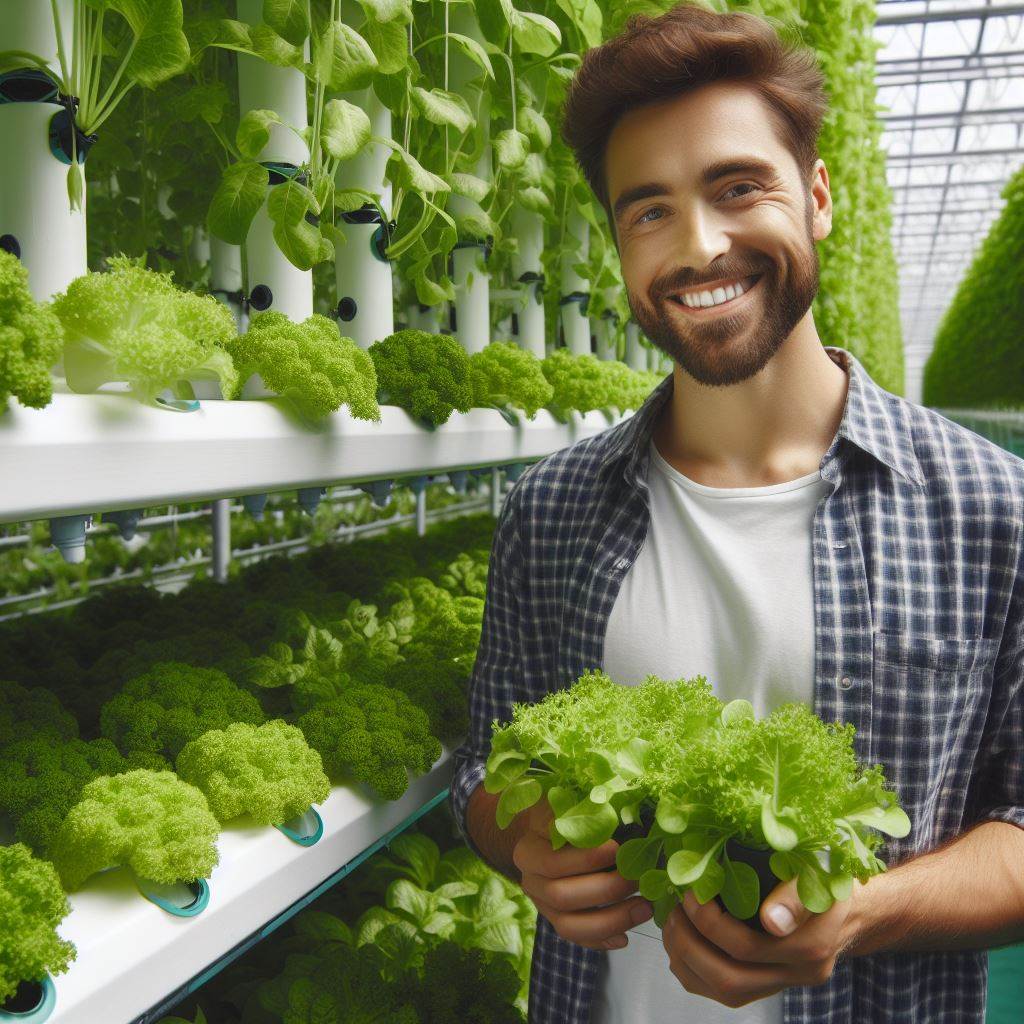Introduction
Benefits of having an urban greenhouse
An urban greenhouse is a valuable addition to any city environment, offering a range of benefits.
The ability to grow your own produce not only ensures a fresh and organic food source but also promotes sustainability and reduces carbon footprint.
Additionally, urban greenhouses contribute to improved air quality, providing a space for plants to absorb harmful pollutants and release oxygen.
Purpose for the blog post
The purpose of this blog post is to guide readers through the process of building their own urban greenhouse.
By following the step-by-step instructions provided, readers will be able to create an affordable and sustainable greenhouse right in their own backyard or even on their balcony.
The post will cover everything from choosing the right location and materials to setting up the necessary infrastructure, such as irrigation and ventilation systems.
Not only will the blog post detail the technical aspects of constructing an urban greenhouse, but it will also highlight the importance of community engagement throughout the process.
Creating a shared green space can foster a sense of community and encourage neighbors to come together and contribute to a greener, more sustainable city.
With this DIY urban greenhouse guide, anyone can transform their urban space into a thriving oasis, reaping the benefits of fresh produce, cleaner air, and a closer-knit community.
Let’s get started on this exciting journey towards a greener and healthier urban environment.
Planning
Selecting the appropriate location for the greenhouse
- Consider a location that receives ample sunlight throughout the day, ideally facing south.
- Avoid areas with large shade-producing structures or trees nearby.
- Ensure good accessibility for maintenance and harvesting.
Determining the size and shape of the greenhouse
- Assess available space and consider the number of plants you intend to grow.
- Think about the desired height, length, and width of the greenhouse.
- Take into account any future expansion plans or potential structures to be included.
Gathering necessary materials and tools
Materials
- Sturdy framing material (such as wood or PVC pipes) for the greenhouse structure.
- Polycarbonate panels or glass for the walls and roof.
- Fasteners (nails, screws, or brackets) to secure the framing and panels together.
- Foundation materials (concrete, gravel, or cinder blocks) to provide stability.
Tools
- Measuring tape for accurate dimensions.
- Saw or pipe cutter to trim framing material.
- Drill or screwdriver for fastening purposes.
- Level to ensure the greenhouse is evenly balanced.
- Safety equipment (gloves, safety glasses) for protection during construction.
Creating a greenhouse layout plan
- Sketch a rough design of the greenhouse indicating the dimensions and positioning of doors and windows.
- Plan the interior layout, including shelves, benches, irrigation systems, and other necessary features.
- Consider how to optimize spacing for plant growth and easy movement within the greenhouse.
Calculating heating and ventilation requirements
- Determine the average lowest temperatures in your area and select appropriate heating systems (electric, gas, or solar).
- Assess ventilation options like vents, louvers, or fans to regulate temperature and humidity.
- Consider insulation materials to maintain a stable environment for plants during colder seasons.
Researching plant selection
- Identify the types of plants you wish to grow and understand their specific environmental requirements.
- Consider factors like sunlight exposure, temperature range, and humidity levels for optimal plant growth.
- Choose plants that complement your skills and gardening interests.
Budgeting and cost estimation
- Research the prices of required materials and tools from various suppliers.
- Consider any additional expenses such as permits, electrical wirings, or irrigation systems.
- Allocate a contingency budget for unexpected costs or changes in design.
Obtaining necessary permits and approvals
- Check with local authorities or homeowner associations to determine if any permits are required.
- Ensure compliance with building codes, zoning regulations, and setback requirements.
- Submit necessary documentation and seek approvals before proceeding with the construction.
Seeking professional advice if needed
- Consult with experienced gardeners, architects, or greenhouse specialists to ensure a successful project.
- Seek guidance on optimizing plant growth, greenhouse design, and efficient utilization of resources.
- Professional advice can help address specific challenges or provide innovative solutions.
By carefully planning your DIY urban greenhouse, you lay a solid foundation for a thriving green oasis in the heart of the city.
Read: Urban Chicken Coops: Fresh Eggs Daily
Preparing the Site
Clearing the area and ensuring proper drainage
Before starting the construction of your DIY urban greenhouse, it is essential to clear the area where you plan to build it.
Remove any existing vegetation, debris, or obstacles that may hinder the construction process. This will provide a clean and unobstructed space to work with.
Additionally, ensuring proper drainage is crucial for the success of your greenhouse.
Transform Your Agribusiness
Unlock your farm's potential with expert advice tailored to your needs. Get actionable steps that drive real results.
Get StartedEvaluate the site’s natural drainage patterns and make necessary modifications to prevent the accumulation of water.
This can be achieved by adjusting the ground slope or installing drainage systems if required.
Leveling the ground and removing any obstacles
Once the area is cleared, the next step is to ensure that the ground is leveled.
A flat and even surface is essential for the stability and structural integrity of the greenhouse.
Use a shovel or a rake to remove any humps, bumps, or uneven areas on the site.
This will create a solid foundation for your greenhouse structure.
Furthermore, it is important to eliminate any remaining obstacles that could interfere with the construction process.
This includes rocks, roots, and other obstructions that may hinder the stability or impede the installation of the greenhouse components.
Take the time to thoroughly inspect and remove any such obstacles.
Adding any necessary support structures or foundation
Depending on the design and size of your DIY urban greenhouse, you may need to add additional support structures or a foundation.
This step is crucial to ensure the longevity and stability of your greenhouse.
Support structures can include posts, beams, or trusses that will provide the necessary structural support for the greenhouse frame.
These should be installed according to the manufacturer’s instructions or as per your specific design.
If your greenhouse requires a foundation, it is important to construct it properly.
The foundation will provide a solid base for your greenhouse and prevent shifting or sinking over time.
Concrete slabs or footings are commonly used for greenhouse foundations, but you can explore other options based on your specific needs and preferences.
In essence, preparing the site for your DIY urban greenhouse is a critical initial step in the construction process.
Clearing the area, ensuring proper drainage, and leveling the ground lays a strong foundation for the success of your greenhouse project.
Additionally, adding support structures or a foundation will enhance the stability and longevity of your greenhouse.
By taking the time to properly prepare the site, you are setting the stage for a successful and fulfilling greenhouse gardening experience.
Read: Window Box Farming: Herbs and Flowers
Building the Frame
Choosing a suitable frame material
When it comes to building your DIY urban greenhouse, one of the first steps is choosing the right frame material.
The material you choose will determine the durability and overall look of your greenhouse.
Here are the most popular options:
Showcase Your Farming Business
Publish your professional farming services profile on our blog for a one-time fee of $200 and reach a dedicated audience of farmers and agribusiness owners.
Publish Your Profile- Wood: Wood is a classic and versatile choice for framing your greenhouse. It is sturdy, relatively easy to work with, and has a natural look that blends well with outdoor surroundings. Cedar and redwood are the top choices due to their resistance to rot and insects.
- PVC: PVC (polyvinyl chloride) is a lightweight and affordable material option for greenhouse frames. It is easy to work with, does not rot or rust, and offers good insulation properties. PVC frames can be a great choice for smaller and temporary greenhouses.
- Metal: Metal frames, such as aluminum and galvanized steel, are known for their strength and durability. They can withstand extreme weather conditions and require minimum maintenance. Metal frames also provide excellent structural support for larger greenhouse designs.
Measuring and cutting the frame components
Once you have decided on the frame material, it’s time to measure and cut the components to fit your desired greenhouse size.
Accurate measurements are crucial at this stage to ensure a precise fit and a properly functioning greenhouse.
Here are some tips:
- Measure twice, cut once: Double-check your measurements before making any cuts to avoid costly mistakes. Use a tape measure or a ruler to ensure accuracy.
- Use the right tools: Depending on the material you’ve chosen, select the appropriate cutting tools. For wood, a circular saw or a miter saw works well. PVC can be easily cut using a hacksaw or a PVC pipe cutter. Metal frames require specialized tools, such as a metal-cutting blade or a reciprocating saw.
- Take safety precautions: Always wear safety goggles and gloves when cutting the frame components. Follow the manufacturer’s instructions for using the cutting tools and ensure a stable work surface.
Assembling and securing the frame
With all the components cut to size, it’s time to assemble and secure the frame of your DIY urban greenhouse.
Here’s how to do it:
- Lay out the components: Lay out all the frame components on a flat surface, following your greenhouse design plan. This will help you visualize the assembly process and ensure that everything fits together correctly.
- Connect the corners: Depending on your frame material, use suitable connectors such as screws, nails, or PVC glue to secure the corners of the frame. Make sure the connections are tight and sturdy to ensure a stable structure.
- Add support beams: To strengthen the frame, add support beams along the length and width of the greenhouse. These beams will provide additional stability and prevent the frame from shifting or bending under the weight of the greenhouse covering material.
- Check for levelness: Throughout the assembly process, check for levelness using a spirit level to ensure that your greenhouse will stand straight and function properly.
- Secure the frame to the ground: Once the frame is fully assembled, secure it to the ground using stakes or anchors. This will prevent it from moving or getting damaged by strong winds.
By following these steps, you will successfully build the frame of your DIY urban greenhouse.
Next, you can move on to installing the greenhouse covering and adding the final touches to create a thriving urban oasis.
Read: Small-Scale Farming: From Seed to Table
Installing the Roof and Walls
Selecting appropriate coverings
When it comes to covering your urban greenhouse, you have several options to choose from. Consider the following:
- Glass: Glass is a popular choice for its durability and aesthetic appeal. It allows sunlight to enter while providing insulation.
- Polycarbonate: Polycarbonate is a lightweight and shatterproof material that offers excellent insulation properties.
- Plastic Film: Plastic film is an affordable option that provides good insulation but may need to be replaced more frequently.
Choose the covering that best suits your needs and budget for your DIY urban greenhouse.
Attaching the roof panels securely
Once you have chosen the appropriate covering, it’s time to attach the roof panels securely. Follow these steps:
- Measure and mark the positions of the roof panels on the greenhouse frame.
- Pre-drill holes into the frame at the marked positions.
- Place the panels on the frame and align them properly.
- Using screws or nails, attach the panels to the frame, ensuring they are tightly secured.
Take your time and double-check the alignment of the panels to ensure a secure installation.
Installing the walls and ensuring proper ventilation
After securing the roof panels, it’s time to install the walls of your urban greenhouse. Follow these steps:
- Measure and mark the positions of the wall panels on the greenhouse frame.
- Pre-drill holes into the frame at the marked positions.
- Place the panels on the frame and align them properly.
- Using screws or nails, attach the panels to the frame, ensuring they are tightly secured.
Proper ventilation is crucial for maintaining a healthy environment inside your greenhouse.
Here’s how to ensure it:
- Install ventilation windows or vents on opposite sides of the greenhouse.
- Use fans or louvers to promote air circulation.
- Consider installing a temperature or humidity-controlled ventilation system for precise control.
- Regularly monitor and adjust the ventilation to maintain optimal growing conditions.
By following these steps, you can successfully install the roof and walls of your DIY urban greenhouse while ensuring proper ventilation.
Read: Urban Green: Edible Plants in Pots

Setting Up the Interior
Adding shelving or tables for plants
To maximize the space inside your DIY urban greenhouse, consider adding shelves or tables specifically designed for your plants.
These additional surfaces will help you organize and display your plant collection effectively.
- Choose sturdy and durable materials for your shelves or tables. Opt for materials like wood or metal, which can withstand the weight of your plants.
- Position the shelves or tables strategically to create a layout that allows easy access to your plants. Consider the growth patterns and heights of different plant varieties when arranging them.
- Ensure that each shelf or table is level and stable. This will prevent accidents and ensure that your plants remain safe and secure.
Installing a watering system and proper irrigation
Efficient watering is crucial for the success of your urban greenhouse.
Installing a watering system and proper irrigation will save you time and ensure consistent hydration for your plants.
- Choose a suitable watering system based on your greenhouse’s size and the types of plants you want to grow. Options include drip irrigation systems, soaker hoses, and automatic sprinklers.
- Install the watering system according to the manufacturer’s instructions. Ensure proper connections and regularly check for leaks or other issues.
- Set up a timer or a smart irrigation controller to automate your watering schedule. This will save you from the hassle of manually watering your plants every day.
Incorporating proper lighting and heating options
Providing adequate lighting and maintaining proper temperature conditions are essential for the optimal growth of your plants in an urban greenhouse.
- Install grow lights that mimic natural sunlight. LED grow lights are energy-efficient and provide the necessary spectrum for photosynthesis. Position them at an appropriate height to cover all your plants.
- Consider using supplemental heating to keep the temperature within the desired range. You can use portable heaters, radiant heating systems, or even composting to generate heat.
- Use a thermostat or temperature controller to maintain a consistent temperature. This will help your plants thrive and protect them from temperature fluctuations.
In a nutshell, setting up the interior of your DIY urban greenhouse requires careful planning and consideration of various factors such as shelving, watering systems, and lighting.
By creating a well-organized and efficient interior, you can provide a healthy and thriving environment for your plants.
Plant Selection and Care
Researching suitable plants for greenhouse cultivation:
- Before choosing plants for your urban greenhouse, conduct thorough research to ensure their suitability.
- Consider factors such as temperature requirements, sunlight needs, humidity levels, and space availability.
- Look for plants that thrive in controlled environments and have a high tolerance for fluctuating temperatures.
- Consult gardening books, online resources, or local experts for recommendations on greenhouse-friendly plants.
- Prioritize plants that are known for their ability to purify air and add beauty to indoor spaces.
Understanding the specific needs of selected plants
- Once you have chosen your plants, familiarize yourself with their specific care requirements.
- Pay attention to the ideal temperature, light intensity, and water and nutrient needs of each plant.
- Some plants may require specific growing mediums or regular pruning to encourage healthy growth.
- Take note of any pests or diseases that commonly affect your selected plants and learn how to prevent or treat them.
- Consider the growth habits and mature size of your plants to ensure they have enough space to thrive.
Implementing proper care and maintenance routines
- Create a regular watering schedule based on the moisture needs of your plants.
- Monitor the humidity levels in your greenhouse and adjust as necessary to maintain optimal conditions.
- Use organic, nutrient-rich fertilizers to supplement the soil and provide essential nutrients to your plants.
- Regularly inspect your plants for signs of pests or diseases and take immediate action if necessary.
- Prune your plants to remove dead or damaged parts and promote healthy growth and bushier appearance.
- Provide adequate support structures such as stakes or trellises for climbing or vining plants.
- Rotate plants periodically to ensure even light exposure and prevent one-sided growth.
- Clean and sanitize your greenhouse regularly to prevent the buildup of mold, algae, or other harmful microorganisms.
- Keep a gardening journal to track the progress of your plants, note any issues, and make necessary adjustments.
- Stay vigilant and observe your plants closely to address any problems or changes in their health promptly.
By researching suitable plants for your greenhouse, understanding their specific needs, and implementing proper care and maintenance routines, you can create a thriving urban oasis inside your DIY greenhouse. Happy gardening!
Explore Further: Natural Insect Repellents for Healthy Plants
Monitoring and Troubleshooting
Regularly checking temperature, humidity, and other factors
Regularly monitoring the temperature, humidity, and other factors in your DIY urban greenhouse is crucial for maintaining a healthy environment for your plants.
To ensure optimal conditions, you should invest in a thermometer, hygrometer, and other sensors that can provide accurate readings.
Monitoring the temperature is essential as it affects the growth and development of your plants.
Different plants have different temperature preferences, so it’s vital to maintain the appropriate range.
Humidity also plays a significant role in your greenhouse.
Most plants thrive in moderate humidity, but excessive moisture can cause diseases and fungal growth.
Regularly checking and adjusting humidity levels is necessary for their well-being.
Apart from temperature and humidity, keep an eye on other factors such as light intensity, air circulation, and CO2 levels.
These factors directly impact plant growth and should be monitored for optimal conditions.
Identifying and addressing common issues and pests
Even with regular monitoring, issues can arise in your urban greenhouse.
Identifying these problems early on is key to prevent them from escalating and damaging your plants.
One common issue is nutrient deficiency.
Plants require a balanced supply of nutrients, and deficiencies can lead to stunted growth and unhealthy plants.
Regularly inspect the leaves for discoloration or unusual patterns, and address any deficiencies through appropriate fertilization.
Showcase Your Farming Business
Publish your professional farming services profile on our blog for a one-time fee of $200 and reach a dedicated audience of farmers and agribusiness owners.
Publish Your ProfilePests are another challenge that greenhouse gardeners often face.
Common pests include aphids, spider mites, and whiteflies.
Regularly inspecting your plants, particularly the undersides of leaves, can help you spot these pests early.
If detected, take appropriate measures such as introducing beneficial insects or using organic pesticides.
In addition to pests, diseases can also affect your plants.
Common diseases in greenhouses include powdery mildew, damping-off, and root rot.
Monitor your plants for any signs of disease, such as wilting, discoloration, or unusual spots.
If a disease is identified, promptly remove the infected plants or treat them with appropriate fungicides.
Troubleshooting any problems that arise
While monitoring and addressing issues in your DIY urban greenhouse can prevent most problems, occasional challenges may still arise.
If you notice abnormal plant growth or discoloration, it could indicate an underlying problem.
First, check the environmental factors like temperature, humidity, and light intensity to ensure they are within the appropriate range.
Adjust them accordingly if necessary.
If the problem persists, examine the root system for any signs of rot, pests, or nutrient deficiencies.
Healthy roots are crucial for plant health, so addressing root-related issues is essential.
In case you’re unable to pinpoint the problem or it persists despite your efforts, seek advice from experienced gardeners or horticulturists.
Online forums and gardening communities can be valuable resources for troubleshooting assistance.
Maintenance of your greenhouse equipment is also crucial.
Regularly inspect your ventilation system, irrigation system, and lighting fixtures for any malfunction or wear.
Addressing these issues promptly can prevent further problems down the line.
Remember, active monitoring, timely troubleshooting, and addressing issues promptly are the keys to maintaining a successful DIY urban greenhouse.
By ensuring optimal conditions and addressing problems as they arise, you can create a thriving green oasis in an urban setting.
See Related Content: Soil Aeration Techniques for Healthier Roots
Harvesting and Enjoying the Fruits
Knowing the right time to harvest different crops
- Regularly monitor your crops to determine when they have reached maturity.
- Refer to seed packets or plant labels for specific information on each crop’s harvesting time.
- Use your senses to assess the readiness of fruits and vegetables by checking their color, smell, and texture.
- Harvest leafy greens when they have reached the desired size, ensuring continuous production by picking outer leaves first.
- For tomatoes, gently squeeze them to feel a slight give, indicating they are ripe for picking.
Properly storing and preserving harvested produce
- Immediately harvest produce that is ripe or risks becoming overripe.
- Handle produce with care to avoid bruising and damage during harvest and post-harvest activities.
- Wash fruits and vegetables thoroughly to remove any dirt or debris before storing.
- Store harvested produce in appropriate containers or bags to maintain freshness and prevent spoilage.
- Some crops like root vegetables can be stored in a cool, dark place, while others require refrigeration.
- Preserve surplus produce through various methods such as canning, pickling, freezing, or dehydrating.
Enjoying the benefits of the urban greenhouse and sharing with others
- Indulge in the satisfaction of tasting homegrown, fresh, and nutritious produce straight from your greenhouse.
- Experiment with different recipes and cooking techniques to fully enjoy the flavors of your harvest.
- Share your bountiful harvest with friends, family, and neighbors, fostering a sense of community.
- Organize community events or swap meets to exchange various crops and tips among urban greenhouse enthusiasts.
- Inspire others to start their own urban greenhouse projects by showcasing your success and delicious bounty.
- Utilize surplus produce to support local food banks and contribute to community initiatives against food insecurity.
With careful observation, proper storage, and a mindset of sharing, harvesting the fruits of your urban greenhouse can be a delightful and rewarding experience.
Embrace the joy of consuming your homegrown produce and spread the love to those around you!
Discover More: Container Gardens: Year-Round Tips
Conclusion
To wrap up, creating a DIY urban greenhouse involves several key steps:
- Choose a suitable location and gather materials.
- Build the foundation and frame.
- Install the glazing and ventilation systems.
- Set up the shelving and irrigation system.
- Add the final touches, such as insulation and lighting.
I encourage all readers to embark on their own greenhouse projects.
- A DIY urban greenhouse allows you to grow fresh produce and beautify your surroundings.
- It promotes sustainability and self-sufficiency, reducing your carbon footprint.
- Starting small is fine; you can always expand and improve your greenhouse over time.
In a nutshell, creating a DIY urban greenhouse is an exciting and rewarding endeavor.
- Enjoy the process of learning and experimenting with horticulture.
- Embrace the benefits of eating homegrown, pesticide-free fruits, vegetables, and herbs.
- Remember, a little bit of effort can go a long way in making a positive impact on the environment.
Don’t hesitate to take the leap and start your own DIY urban greenhouse project. Happy gardening!




